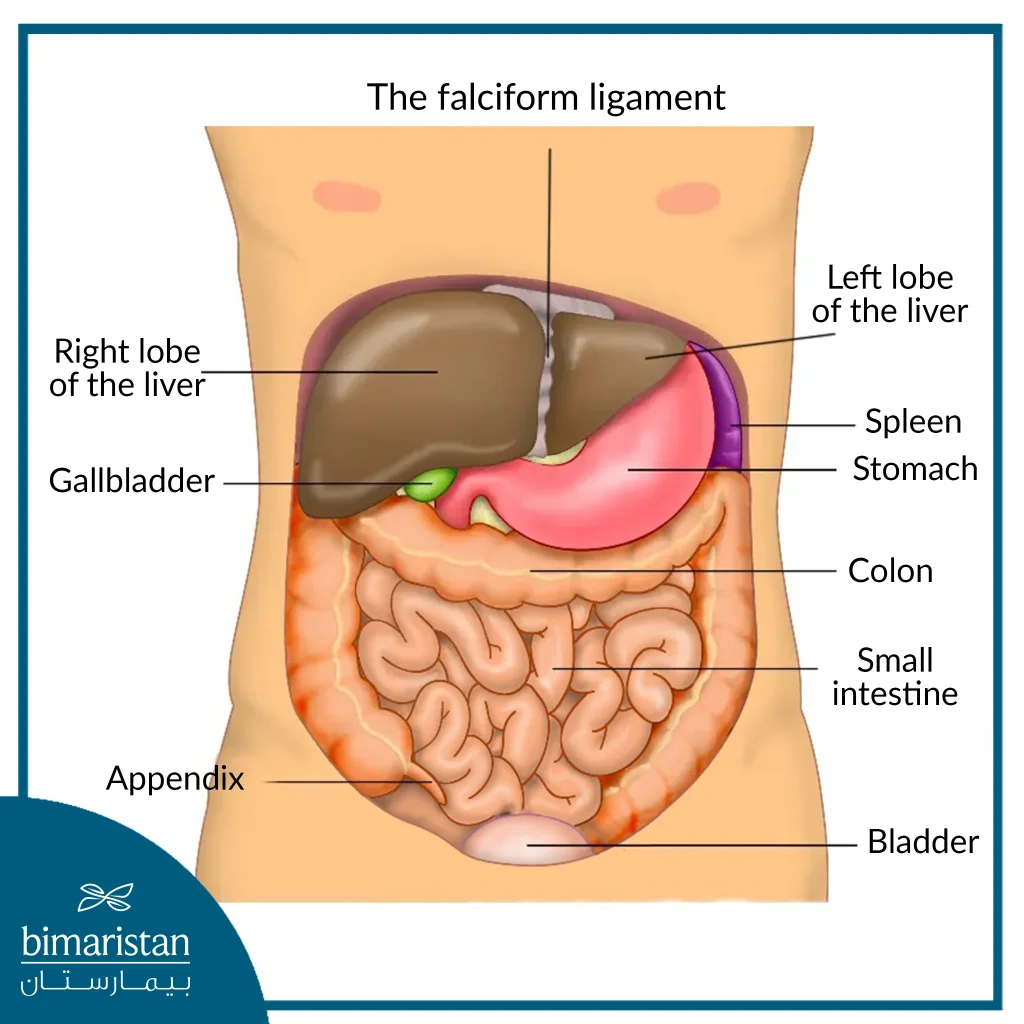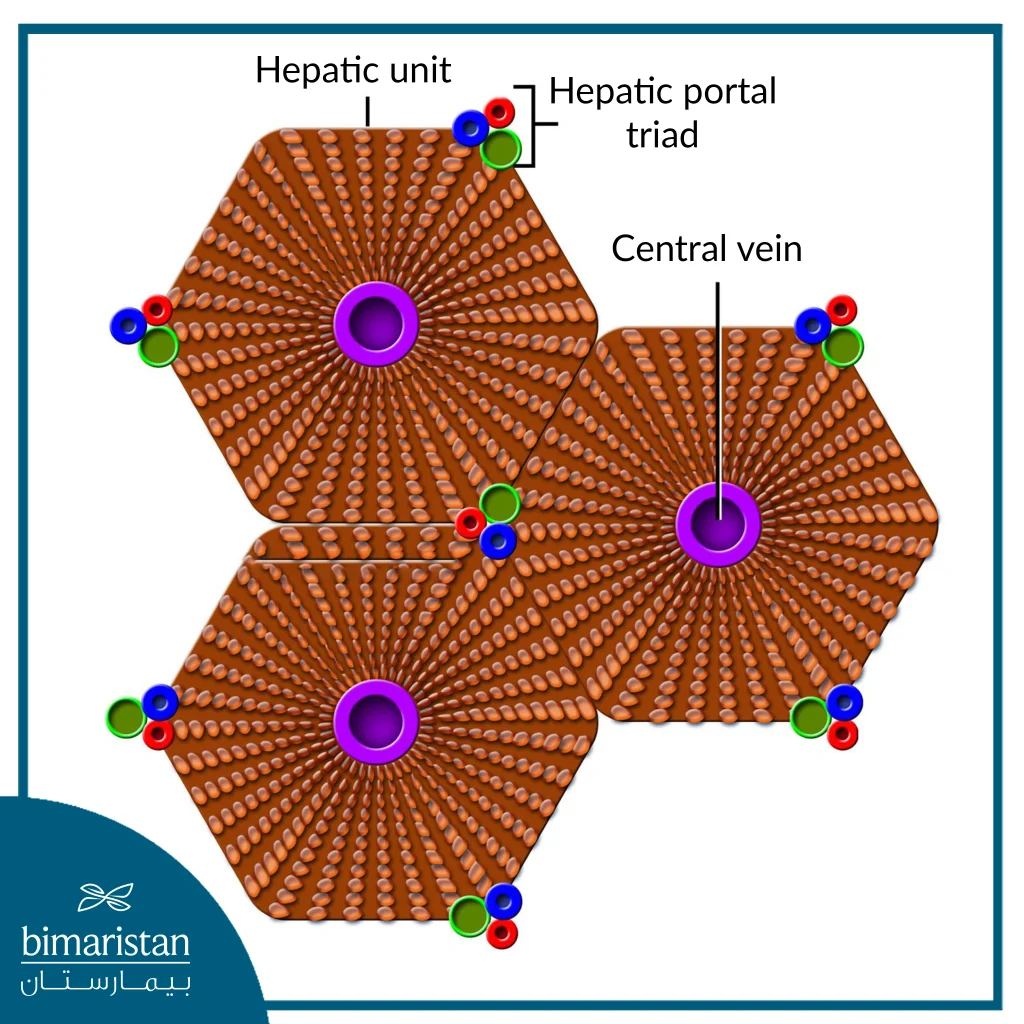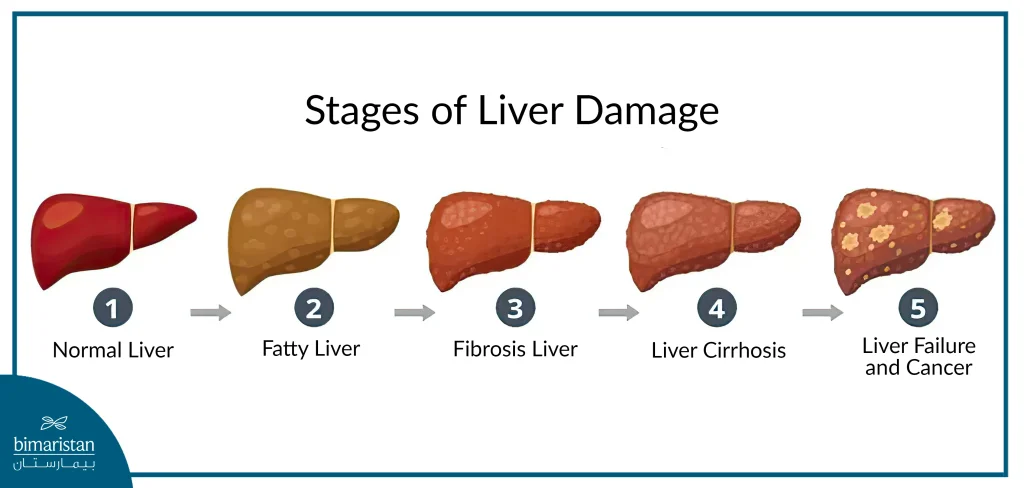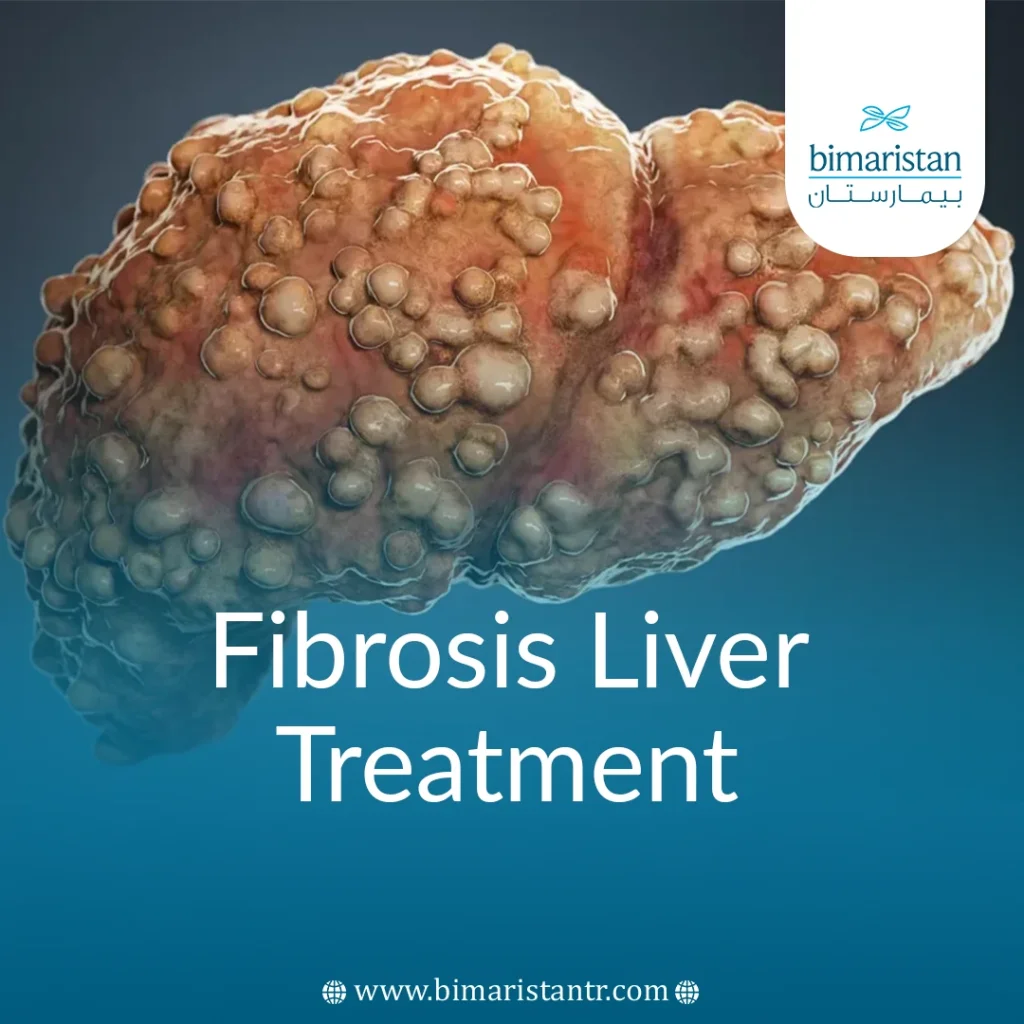Liver fibrosis treatment is pivotal in the patient’s life. Otherwise, the liver disease will worsen, and the fibrosis will turn into cirrhosis and then death. Liver fibrosis has many causes, and the treatment depends on this cause.
Liver fibrosis treatment
The liver is one of the most important organs in the human body, and life without one is impossible due to the multiple tasks it performs in and outside the digestive system. These tasks require a huge chemical laboratory in modern times.
To understand the mechanism of liver fibrosis, we must first know its functions and how it works. Anatomically, the human liver consists of two lobes, a large right and a small left, between which is the sickle ligament.

Histological structure of the liver
Histologically, the liver consists largely of hepatocytes and other cells with multiple functions. These cells gather together to form the hepatic unit, which is hexagonal (hexagon).
The central vein is in the middle of the hepatic unit, and the portal triad (artery, vein, bile duct) is in each corner of the hexagonal shape. The hepatic units gather together to form the liver’s lobes.
The blood moves from the triad towards the hepatic vein, passing through the hepatic cells. The bile moves opposite to the blood to empty into the gallbladder. The liver works through this system, so any obstruction to this system will disrupt the liver’s function, and thus, we head toward liver failure.

Pathological mechanism of liver damage
There are many causes of liver dysfunction, but they all agree on the death of liver cells or damage and destruction of the hexagonal shape in the liver units. Thus, scar tissue containing only fibers (without cells) occurs in the place of this damage, causing resistance to blood flow and not filtering it from toxins.
As a result, liver fibrosis occurs, which worsens over time, causing cirrhosis of the liver and, thus, liver failure, which is the final stage of liver disease, where the patient eventually suffers from many complications that lead to his death.
Stages of liver damage
Liver fibrosis or cirrhosis does not occur overnight; rather, it accumulates damage over many years, leading to the patient’s condition. Damage to a small area of the liver does not cause the disease, and the patient may not show any symptoms even if only 30% of liver function remains.
Liver damage includes four stages: inflammation (fatty), fibrosis, cirrhosis, and failure.
Fatty Liver (with inflammation)
A condition in which fat accumulates in liver cells, causing inflammation. It is the first stage and precedes fibrosis. This damage is reversible, meaning the liver can heal if appropriate treatment is received.
Liver Fibrosis
Due to inflammation, some liver cells die and are replaced by scar tissue. These scars form fibers that collect together, compensating for the gaps at the damage’s site, leaving scar tissue traces that doctors rely on for diagnosis.
The liver gradually loses its function with the accumulation of fibers and the abundance of scar tissue. Treatment of liver fibrosis is possible, and the damage can be stopped or reversed (treatment of liver fibrosis at this stage is very necessary).
Liver Cirrhosis
This is the stage following liver fibrosis. The damage is irreversible, and there is no treatment for cirrhosis. The loss of liver function is significant, and the symptoms, such as general fatigue, are clear to the patient. The patient here is at risk of developing hepatocellular carcinoma (liver cancer).
Chronic Liver Failure
The last stage of liver disease is a complete failure of liver functions due to the destruction of all liver tissue and a very bad condition for the patient. The only treatment is a liver transplant from a living donor. Otherwise, the patient may live only a few hours due to the accumulation of toxins in the body, causing brain damage.

Causes of liver fibrosis
The causes of liver fibrosis vary, and the treatment of liver fibrosis varies according to the cause. These causes range from toxins, infections, and metabolic disorders in the body. Some may also be genetic, and autoimmunity sometimes plays a role. These causes include:
- Viral hepatitis: Types B and C are among the most common causes, as they are transmitted through sex or through close contact with the blood of an infected person or through the use of their toothbrush or razor blade.
- There is a vaccine to prevent hepatitis B that is given to health workers who have direct contact with the blood of patients, but there is no vaccine for the hepatitis C virus to date.
- Alcohol addiction: Drinking large amounts of alcohol for many years causes permanent damage to the liver, leading to fibrosis, then cirrhosis, and finally liver failure, which is the most common cause of liver cirrhosis in the West.
- Non-alcoholic fatty liver disease (NAFLD): It is a condition of liver damage without alcohol addiction. These cases occur in people due to high blood fats due to the patient’s obesity or diabetes.
- Bile duct obstruction: Inflammation and obstruction of the bile ducts lead to severe liver damage and fibrosis due to the accumulation of bile in the liver. The cause may be inflamed gallstones, which means the gallbladder must be removed.
- Autoimmune hepatitis: It is the presence of antibodies made by the human body against liver cells due to a specific malfunction in the immune system, which leads to liver damage. Treatment here is with immunosuppressants.
- Genetic diseases and metabolic disorders: As the deficiency of some enzymes in the liver leads to the accumulation of substances in it, causing scarring and cirrhosis of the liver, the most famous of which is iron accumulation in the liver, Wilson’s disease (copper accumulation) and antitrypsin enzyme deficiency, which affects the function of the liver.
- Hepatotoxic drugs: Using some hepatotoxic drugs to treat diseases for a long time may lead to severe damage to the liver and cause fibrosis and cirrhosis of the liver. These drugs include non-steroidal anti-inflammatory drugs (ibuprofen), Augmentin, and ketoconazole.
Liver fibrosis symptoms
Symptoms vary according to the severity of liver damage. In the beginning, the disease is asymptomatic, and the liver can function at high efficiency despite the damage caused to it due to its ability to compensate.
As fibrosis progresses, symptoms begin to appear and gradually worsen until the liver’s compensation is broken, it enters a state of failure or failure, and then the patient dies. These symptoms include:
- General fatigue
- Loss of appetite
- Nausea
- Mind confusion
- Weight loss and muscle weakness
If the patient’s condition deteriorates further, the following symptoms of cirrhosis appear:
- Jaundice (skin and whites of the eyes turn yellow)
- Asthenia (enlargement of the abdomen and its filling with excess fluid)
- Generalized edema in the extremities
- Itching of the skin
- Easy bleeding
- Vomiting blood (may be life-threatening due to bleeding esophageal varices)
- Loss of sexual desire
- Neurological symptoms due to encephalopathy
Liver fibrosis treatment in Turkey
Since liver fibrosis is a reversible damage, treatment of liver fibrosis limits liver damage and disease progression by treating the cause that led to fibrosis. Therefore, to treat liver fibrosis, we will use one of the following treatment methods:
Medications to treat hepatitis (B and C) if one or both are detected early before the stage of liver cirrhosis. Among these medications is interferon-gamma (taking the vaccine to prevent hepatitis is necessary for health workers).
Treatment for alcohol addiction
Addiction to alcohol consumption is treated in order to limit the development of liver fibrosis through drug compounds that treat addiction in addition to using alcohol-repellent substances that make even the smell of alcohol unbearable for the patient.
Treatment of hyperlipidemia
An unbalanced diet causes high blood lipids and cholesterol. Diabetes also causes pathological increases in blood lipids, which leads to liver fibrosis.
Here, treatment of liver fibrosis includes weight control through exercise and healthy eating. Diabetics must also control their blood sugar levels to control this disease. The patient may need an obesity operation in Turkey to lower his lipid levels (we treat the causes to prevent liver fibrosis).
Treatment through liver transplantation in Turkey
This is a treatment for advanced liver fibrosis if the patient has reached the stage of liver cirrhosis and his liver fibrosis has not been treated previously. He will have to undergo a liver transplant in Turkey, which is one of the most common organ transplant operations.
Liver transplantation treatment requires a part of the donor’s liver, not the entire liver. The remaining part will replace the part that was taken. Also, in the transplant patient, the part of the transplanted liver will grow compensatory to meet his needs (which is the advantage of the liver over the rest of the body’s organs).
Contact us if you want to treat liver fibrosis in Turkey. The doctors at Bimaristan Medical Center will guide you in receiving the most appropriate treatment method for your condition to live a normal, happy life with better health.
If you have any symptoms, do not hesitate to contact us to learn about liver fibrosis and its symptoms and causes in more detail.
Sources:

